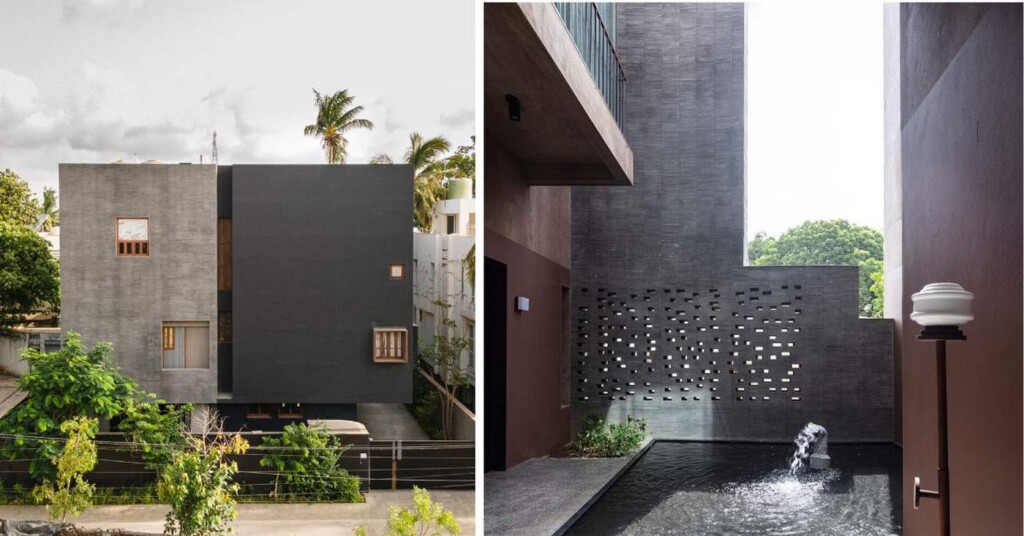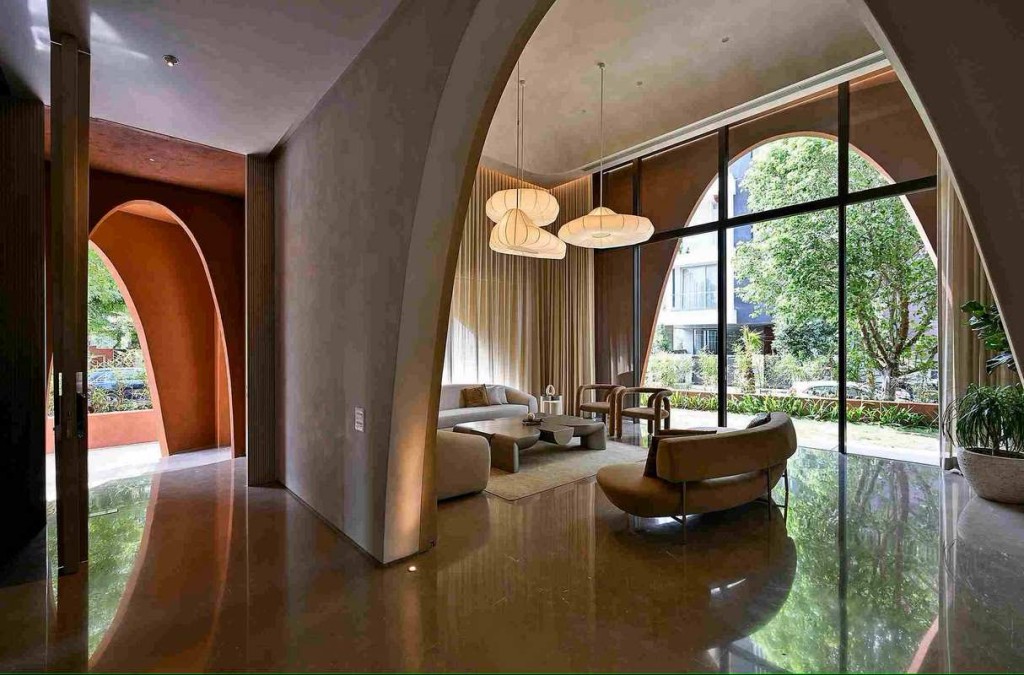 The Gujarat ‘Cool House’ – credit SRDA
The Gujarat ‘Cool House’ – credit SRDAWestern India is home to one of the hottest deserts on Earth, and the residents of the western states of Rajasthan and Gujarat have traditionally used architecture to keep cool.
Utilizing principles of thermodynamics, one house in the city of Bharuch, where temperatures can hover at 110°F for days during the summer, says cool all day and all summer without ever needing the air conditioning switched on.
In fact, the building’s interior is a breezy, green, “introverted space” that passively cools the air inside by a whopping 18°F all using simple science.
“We used the direction of the winds, design, and cooling materials to lower the heat of the house,” Samira Rathod, the principal architect of the ‘Cool House’ and founder of Samira Rathod Design Atelier (SRDA), told The Better India reporting on the story.
“The plot had three buildings around it and a road on one side. The only view that the house would have was the neighbor’s building. An introverted house was a good choice in that sense. It is basically one where the house opens up when you go inside it. From the outside, it would look like a rather closed structure,” she explains.
Indeed, it might even be called depressing, as its front door is hidden between two giant, 18-inch thick facades of gray and black. But inside, a design reminiscent of a railroad track sees the rooms divided on either side of a giant split in the house that was built to align with the current of the wind off the ocean.
Bharuch is situated on the Indian Ocean, and despite the scorching temperatures, at various times during the day, a breeze is present throughout much of the city. The narrow slit in the house leverages the Venturi effect, which states that the narrower the space an element must pass through, the faster and colder it becomes.
The principle can be seen in human breath, which through an open mouth emerges hot, but through pursed lips emerges cool. The same effect can be seen in rivers, where narrow channels cause the water to speed up and form rapids, while wide, flat lands cause the water to slow down.
The wind from the sea enters the split and hits an interior courtyard where a pool of water cools it down further. Entering the 10,500 square foot home interior, a second courtyard aids in circling it around to each room, where the family lives with three generations.
DESERT LIVING: Flintstones-like Home is Built Around 200 Million-Year-old Red Rock in Colorado–And is Now For Sale
“The house looks inwards and we have created courtyards with trees so it feels like you are looking outside rather than inside,” said Rathod.
 Mirai House of Arches in Bhilwara – credit Sanjay Puri Architects
Mirai House of Arches in Bhilwara – credit Sanjay Puri ArchitectsGNN has previously reported on Indian architecture in this part of the country. Natural designs like envelopes, air channels, and even “wind towers” could, and probably should, become normal designs in parts of the world where temperatures are predicted to rise, such as the southwest United States or Southern Europe.
MORE CLEVER BUILDING DESIGNS: These Ancient Chinese ‘Skywells’ Are Keeping Homes Cool as Green Architects Learn from the Past
In Rajasthan’s city of Bhilwara, a “House of Arches” ensures that no part of the building is exposed to the sun thanks to a building envelope that provides shade and air circulation.
The science lies in the separation of the envelope from the house itself. Even as the rays of the sun heat the envelope, wind and moisture evaporation can make their way into the space between the house and the envelope to reduce the radiative heat that enters the living areas.
SHARE These Beautiful Indian Desert Homes And Their Passive Cooling Design…
Source link

